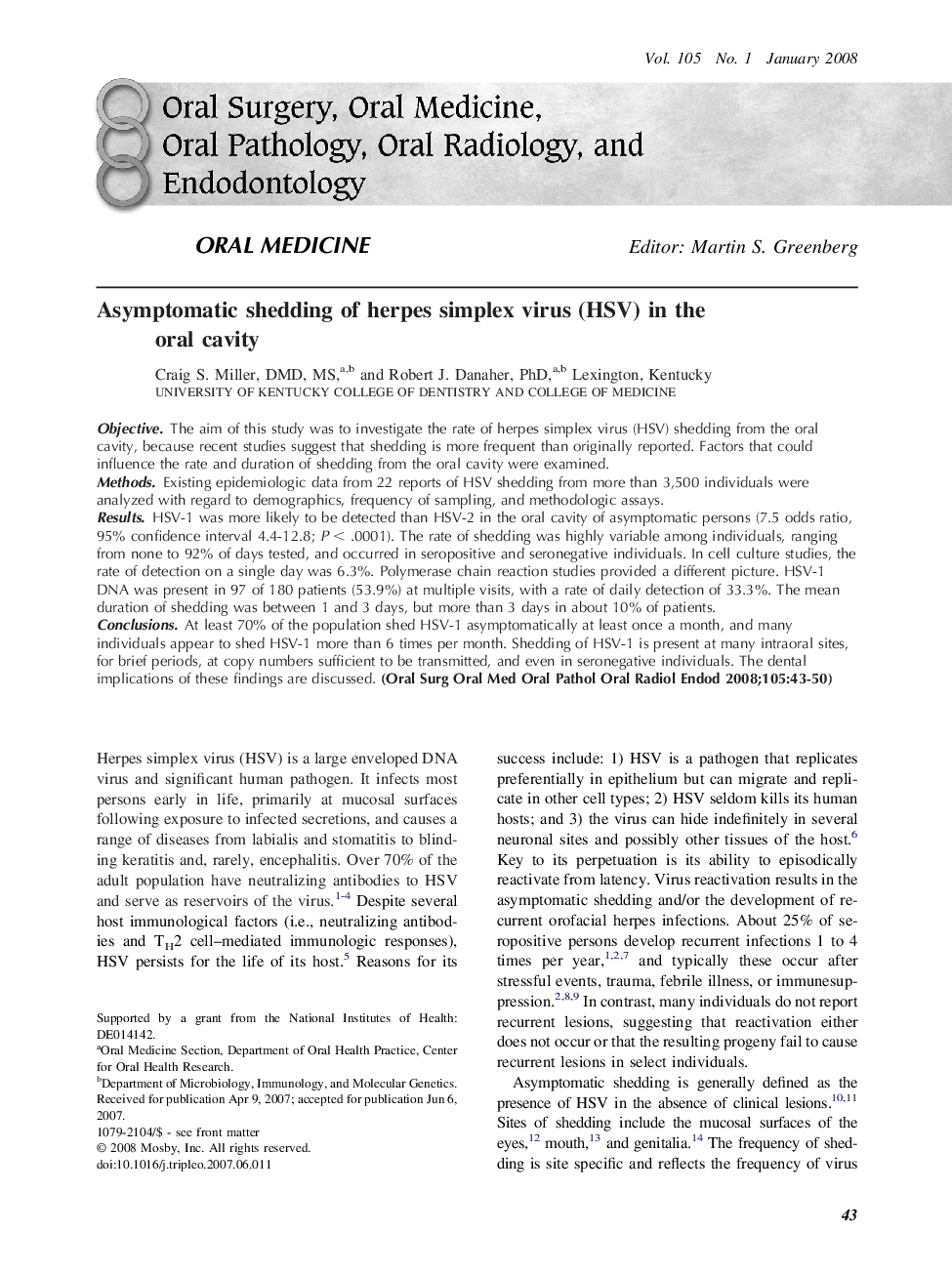| Article ID | Journal | Published Year | Pages | File Type |
|---|---|---|---|---|
| 3168982 | Oral Surgery, Oral Medicine, Oral Pathology, Oral Radiology, and Endodontology | 2008 | 8 Pages |
ObjectiveThe aim of this study was to investigate the rate of herpes simplex virus (HSV) shedding from the oral cavity, because recent studies suggest that shedding is more frequent than originally reported. Factors that could influence the rate and duration of shedding from the oral cavity were examined.MethodsExisting epidemiologic data from 22 reports of HSV shedding from more than 3,500 individuals were analyzed with regard to demographics, frequency of sampling, and methodologic assays.ResultsHSV-1 was more likely to be detected than HSV-2 in the oral cavity of asymptomatic persons (7.5 odds ratio, 95% confidence interval 4.4-12.8; P < .0001). The rate of shedding was highly variable among individuals, ranging from none to 92% of days tested, and occurred in seropositive and seronegative individuals. In cell culture studies, the rate of detection on a single day was 6.3%. Polymerase chain reaction studies provided a different picture. HSV-1 DNA was present in 97 of 180 patients (53.9%) at multiple visits, with a rate of daily detection of 33.3%. The mean duration of shedding was between 1 and 3 days, but more than 3 days in about 10% of patients.ConclusionsAt least 70% of the population shed HSV-1 asymptomatically at least once a month, and many individuals appear to shed HSV-1 more than 6 times per month. Shedding of HSV-1 is present at many intraoral sites, for brief periods, at copy numbers sufficient to be transmitted, and even in seronegative individuals. The dental implications of these findings are discussed.
